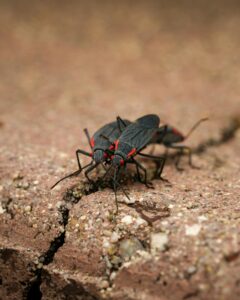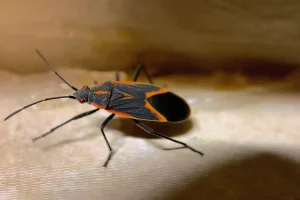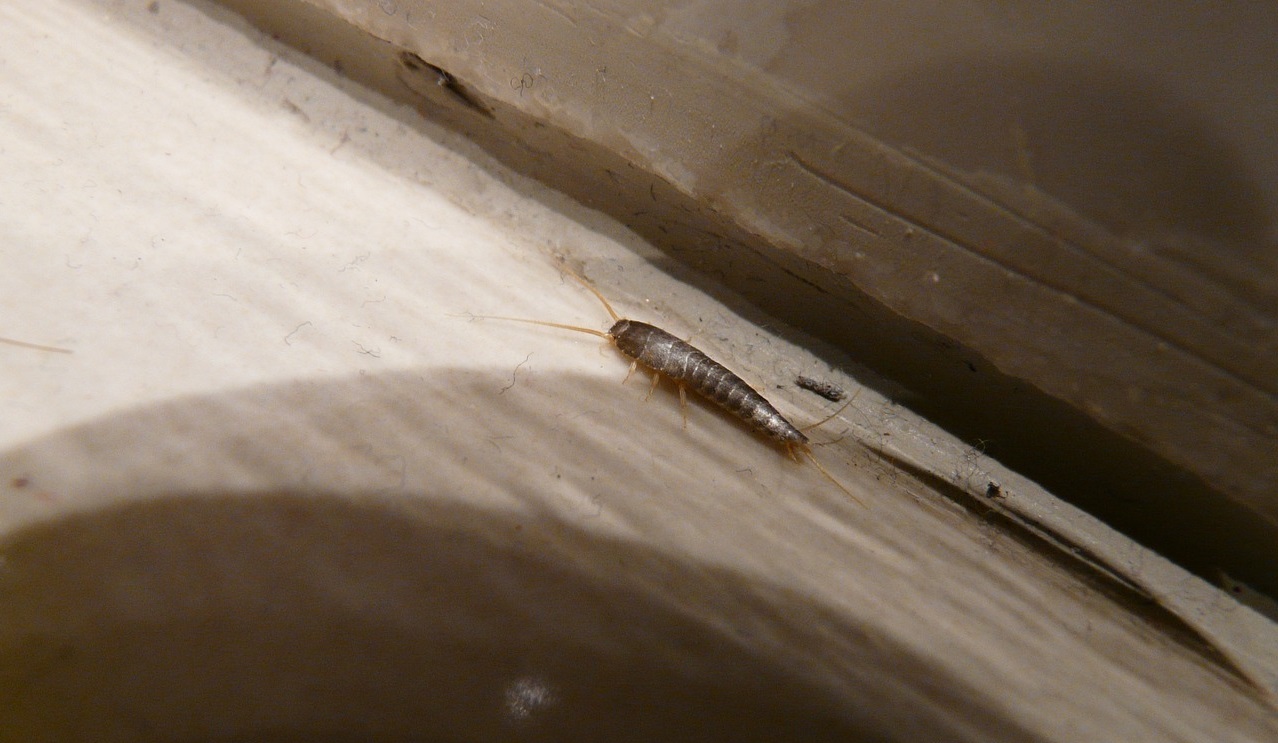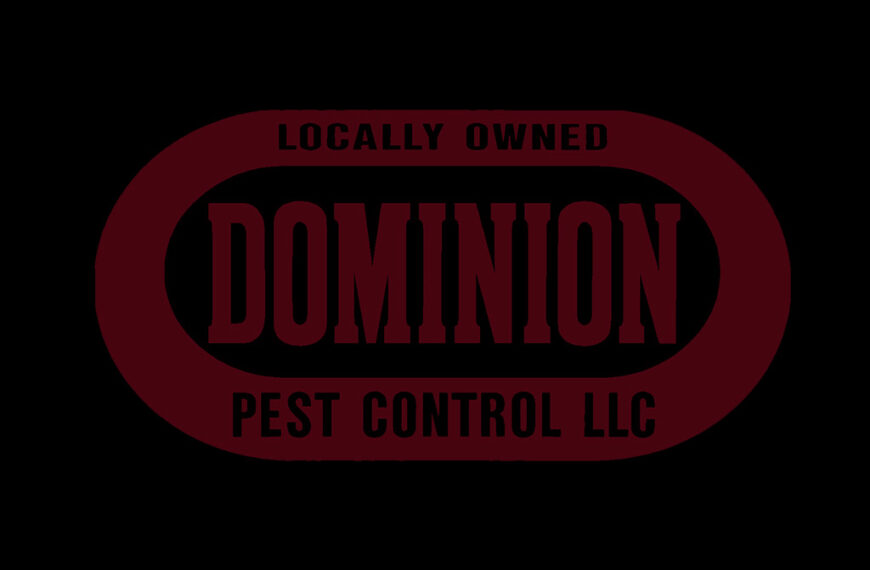How to Get Rid of Boxelder Bugs (and Know if You Have Them)
You can get rid of boxelder bugs by vacuuming them up indoors, sealing cracks where they slip inside, and reducing the boxelder or maple trees around your property that attract the. If the problem keeps coming back, a professional pest control treatment can provide lasting relief.
Wondering if those black-and-red insects gathering around your home are boxelder bugs? These common pests, sometimes called boxelder beetles, often appear in large numbers on sunny walls, windows, and siding. They can slip indoors when temperatures change. Knowing how to identify boxelder bugs is the first step before learning the best ways to get rid of them.
A Dominion Pest Control technician can examine your home to confirm if it’s boxelder bugs or other fall invaders such as ladybugs or stink bugs, then establish a customized plan for elimination and long-term prevention.
Boxelder Bugs
Signs You May Have a Boxelder Bugs
- Clusters of black insects around ½-inch long, with red markings
- Brown or yellow stains on walls, curtains, or window screens from bug droppings
- Large numbers congregating on trees or buildings during fall or winter
- Dead or motionless bugs near heat sources, in attics, basements, or vents
What Are the Most Common Types of Boxelder Bugs in Pennsylvania?
In Pennsylvania, you’re most likely dealing with a single species: the Eastern Boxelder bug (Boisea trivittata). This is the bug most found feeding on boxelder, maple, and ash trees across the eastern U.S.
In fall, these bugs gather in large masses to “sun” themselves on the south side of trees, rocks, buildings, and homes. In winter, they will find any nearby crack or crevice to serve as their shelter from cold. Sometimes, that crevice or crack leads them to the inside of your home or building.
What Are Boxelder Bugs?
These narrow-bodied insects (also sometimes called boxelder beetles) have black or dark brown bodies with bright red-orange markings (three longitudinal stripes on the thorax and red margins on the wings). They actually are not beetles; they’re just bugs. They do not have chewing mouthparts, but rather, mouthparts that pierce and suck.
Nymphs start out bright red and gradually darken with age, developing wing pads before becoming adults. You learn about the boxelder’s life cycle from PennState Extension.
They feed on sap from seeds and foliage of boxelder, maple, and ash trees. They can be found in gardens as well.
When Are Boxelder Bugs Most Active in Pennsylvania?
Boxelder bugs in Pennsylvania are most noticeable in the fall, but their habits shift with the seasons and may vary by region.
Fall (late summer into fall): As temperatures drop, boxelder bugs cluster on the sides of structures. In areas like Lancaster County, Chester County, and York County, where farmland and residential neighborhoods often border boxelder and maple trees, large groups can appear on siding and windows.
Winter: When cold weather sets in, the insects squeeze into cracks of houses and other buildings. In Dauphin County, Lebanon County, and Cumberland County, residents frequently notice them resurfacing indoors during warm spells because home heating systems can stir them out of dormancy.
Spring: With the return of mild weather, the bugs emerge from hiding and migrate back to host trees. Communities across south-central Pennsylvania see heavier activity near boxelder, silver maple, and ash trees that are common in both rural and suburban landscapes.
| Misconceptions | Facts |
|---|---|
| They bite humans and pets; they are harmful | They don’t bite, sting, or transmit diseases. At most, they might “probe” skin with their mouthparts if handled, but it’s harmless. |
| They infest homes and reproduce indoors | They only enter homes to overwinter. They don’t lay eggs, breed, or feed inside buildings. |
| They destroy trees and crops | Their feeding may cause minor leaf spots or blemishes on fruit, but they don’t cause serious damage to trees, gardens, or crops. |
| They’re dangerous pests | They’re considered nuisance insects. The biggest issues are foul odor when crushed and stains from their droppings on walls or fabrics. |
| Pesticides are the best way to control them | Chemical sprays are usually ineffective long-term. The best prevention is sealing cracks, repairing screens, and vacuuming them up when they appear. |
| They’re beetles | They’re actually “true bugs” (order Hemiptera), related to stink bugs and cicadas, not beetles. |
Signs of a Boxelder Bug Infestation
You may have a boxelder bug infestation if you notice clusters of black insects with red markings around doors, windows, or siding, droppings that leave yellow or brown stains on walls and curtains, or dead bugs collecting near heat sources, attics, and basements.
However, some of these signs can also be caused by other fall pests like stink bugs or lady beetles, so proper identification is important.
A Dominion Pest Control technician can confirm whether the insects are boxelder bugs or other look-alike fall invaders such as stink bugs or lady bugs, and recommend the best pest control treatment to remove them and prevent future infestations.
How to Get Rid of Boxelder Bugs in the House (Quickly and Permanently)
DIY steps offer temporary relief, but for long-term control, professional treatment is best. Dominion Pest Control provides:
- Perimeter treatments: Applied around potential entry points to block intrusion
- Interior treatments: Safe, targeted applications in areas where bugs are found
- Seasonal prevention plans: Annual treatments to reduce populations year after year
We often use Nature-Cide All Purpose Concentrate, a home- and pet-safe formula made with clove and cottonseed oil, delivering quick and effective results.
Our pest control technicians know exactly what type of products to apply and where to apply it. Learn more about the Dangers of Self Treating for Pests.
Common Options We Do Not Recommend
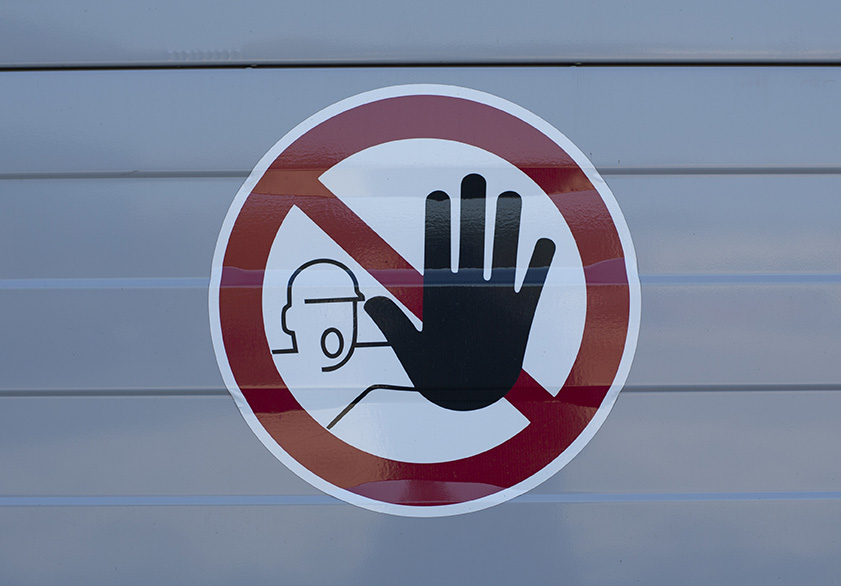
- Vacuuming bugs but ignoring outdoor populations – doesn’t solve the source
- Spraying household cleaners – ineffective and potentially damaging to surfaces
- Sealing entry points after bugs are inside – can trap them within walls where they may later emerge in other areas. As they decompose, or if they leave droppings, you might notice odors or stains.
Dominion Pest Control applies safe and comprehensive strategies for real results.
What’s the Best Time to Seek Pest Treatment?
The best time to treat boxelder bug infestations is in late summer or early fall, as a “pre-invasion” strategy, or in spring, when immature stages are active. Fall treatment is the most effective to prevent them from entering your house.
What’s My Next Step for Boxelder Bug Control?
Take back your home or garden! If boxelder bugs are clustering around your property, or finding their way indoors, fill out our form to get quick help. Dominion Pest Control will reach out promptly.
Pricing: Professional boxelder bug treatments typically start around $150 and may go up to $500 depending on the size of your home and the extent of the problem. After inspecting your property, our technician will provide a clear estimate. Because every situation is different, scheduling an inspection is the best way to understand the cost and the most effective treatment plan.
How to Prepare for Your Local Exterminator: Essential Tips
Your technician will provide exact instructions, but generally you can take a few simple steps before any pest treatment. Start by clearing clutter from floors and around window areas so technicians can easily access the spaces where pests are most likely to hide. Be sure to secure food, dishes, and other sensitive belongings away from treatment zones to prevent contamination.
Since many households in this region include pets and young children, it’s best to keep them out of treated areas temporarily until everything has settled. These precautions not only protect your family but also help the treatment work more efficiently, giving you a cleaner, pest-free home.
Prevention: Best Next Steps to Avoid Re-Infestation
Here are 2 additional steps you can take, while also scheduling routine pest control maintenance.
- Install screens: Repair or replace screens to keep bugs out
- Maintain landscaping: Trim female boxelder and maple trees; clean up fallen seeds, leaves, and debris
FAQs
Are boxelder bugs dangerous?
No, in that they don’t cause physical harm. They don’t carry disease. However, they may stain surfaces if crushed. They also release a foul odor.
Can boxelder bugs reproduce indoors?
No. They lay eggs outdoors, on leaves or tree bark. Their “babies,” or nymphs, need fresh plants to survive. If you see numerous bugs inside and their numbers are increasing, it is because you have infestation and not because they are reproducing.
How long can they live indoors?
Boxelder bugs don’t just last a few weeks indoors; they really can survive for several months without food. That’s because when they come inside, they enter a semi-dormant state called diapause, which slows their metabolism way down. In this state, they’re not actively feeding or reproducing, just conserving energy until spring warmth signals them to head back outside.
What do boxelder bugs eat?
Seeds of female boxelder trees is their top choice. They pierce the seed pods (called samaras) with their needle-like mouthparts and suck out the juices. Maple and ash trees can also serve as hosts. Boxelders will feed on fruits, leaves, and flowers like spirea, honeysuckle, and cherry blossom.
Do they damage trees?
Yes, but typically only mildly. They may feed on seeds and foliage but rarely cause significant harm to trees.
